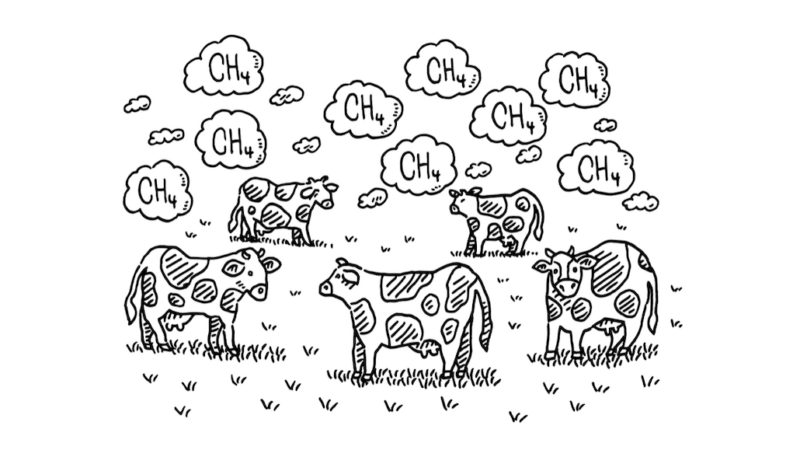The phoenix has reached the end of its life. With a loud cry, this beautiful crimson bird bursts into flame. A few minutes later, from a pile of hot ash, a baby bird pokes out its tiny head. The phoenix has burned, but it is born anew.
This is a myth found in ancient Greek and Egyptian stories. Now, references to the phoenix can be found across fiction, from Harry Potter to the anime One Piece. There are no real phoenixes hiding anywhere. But science has revealed that some living things can take quite a bit of heat. And like a phoenix, a few are even born from the ashes.
Scientists Say: Extremophile
Tardigrades are reputed to be one of the world’s toughest critters. After all, these hardy little animals can survive the vacuum of space. But a warm day at the beach might be a challenge. Used to cool, damp moss, tardigrades begin to die at temperatures between 29° and 37° Celsius (84° and 99° Fahrenheit). When times get tough, tardigrades can enter a state of suspended animation called “tun.” But even then, they can’t take more than an hour at 83 °C (180 °F).
Although that’s hot, it’s not as hot as fire. Even the coolest flame starts at 600 °C (1,110 °F). No living thing can take that kind of heat, says Robert Kelly. He is a chemical engineer and microbiologist at North Carolina State University in Raleigh.
When something is on fire, the carbon in the chemicals in that item combines with oxygen to form carbon monoxide and dioxide. This is combustion. Because carbon is found in every living thing on Earth, nothing living can survive burning. “Not without protective gear,” Kelly says.
But some living things can survive high temperatures. Kelly studies hyperthermophiles. These single-celled lifeforms live in places like hot springs or deep-sea vents. Some are bacteria. But the toughest, hottest of all are members of the archaea — one of the three domains of life.
Not all archaea love the heat, but the ones Kelly studies do. The upper limit for these heat-hardy cells is 120 °C (250 °F) — well above the boiling point of water. If a person were to step into the hot springs where they live, Kelly says, “your skin will basically just fall off your bones.” At temperatures that high, he explains, meat — including human muscle — cooks instantly.
That heat offers challenges to the archaea, Kelly notes. Proteins — important complex molecules in cells — begin to fall apart. Kelly and his colleagues have found thousands of tiny relationships between molecules that help hold the cells together as temperatures soar. “Nature has a lot of very subtle things they do to stabilize a protein,” he says.
Surviving a fire
A phoenix might be able to use some of those tiny chemical reactions to keep its proteins together. But a whole bird — even just a baby — is a lot larger than a single cell. Luckily, some animals have learned to survive heat — even as their world burns.
In South Africa, tiny beetles called weevils live in the fynbos — a dry, shrub-filled area that’s prone to wildfires. Marion Javal was on a hike there with her friends in 2018. As they crossed an area that recently had burned, she got inspired. Javal is an entomologist — someone who studies insects — at the Institute of Research for Development in Montpellier, France.
Some weevils, such as this Ocladius ocladiinae, can survive temperatures above 50° Celsius (120° Fahrenheit). And while they can’t survive a direct flame like a phoenix can, the insects have a survival strategy for an oncoming fire. Some species lay eggs inside plants that can beat the heat. When the fires fade, the weevil eggs hatch — like a phoenix from the ashes. Rémi Allio
In the burned area, “we saw a bunch of very tiny weevils walking on the floor. But, like, very, very small insects that are not really able to fly,” she says. “So we started wondering how and why they were [t]here.” Weevils able to fly would be able to escape a burn. But insects that can’t fly are stuck, she says. Insects are ectothermic — their bodies are the same temperature as the air around them. As the air heats up during a wildfire, they do too. How did the tiny, flightless bugs survive the burn?
Javal and her colleagues collected weevils from the area and tested how much heat they could take. One species, Ocladius costiger, could survive up to 52.6 °C (127 °F). Another, Cryptolarynx variabilis, lived up to 53.4 °C (128 °F). “It was quite unexpected to try to find such high temperature for these very tiny weevils that we had in the study,” Javal says. The scientists published their results in the journal Ecological Entomology in 2022.
The beetles might have some adaptations in their cells to help them survive, Javal notes. Some adult beetles also can dig down into the soil to flee the flames. And some species, she notes, lay eggs inside plants with tough, woody exteriors. Those plants can survive intact the heat of summer as well as any fires, protecting the eggs inside. And then, when the fires die away, the weevil eggs hatch — like a phoenix from the ashes.





